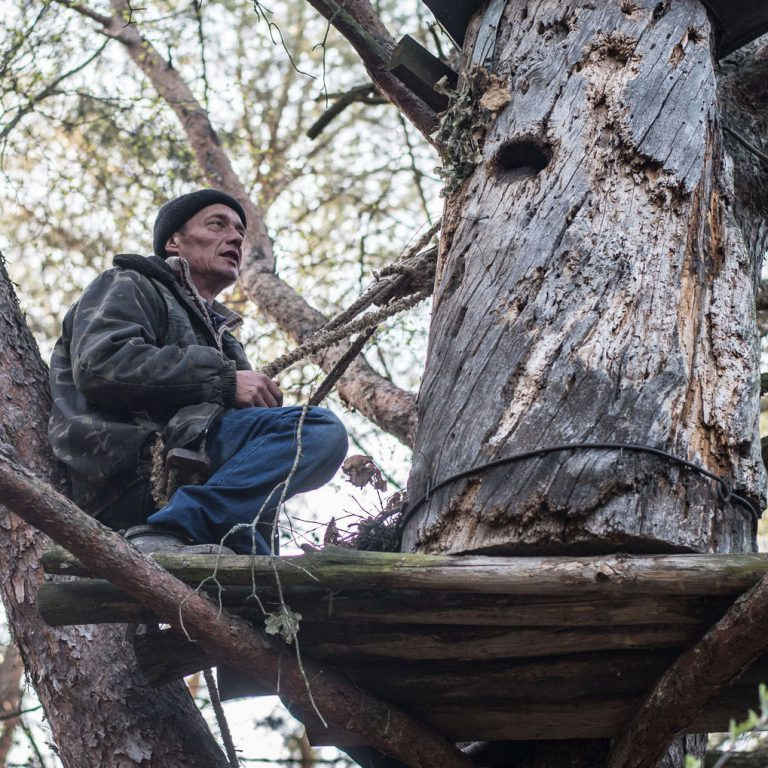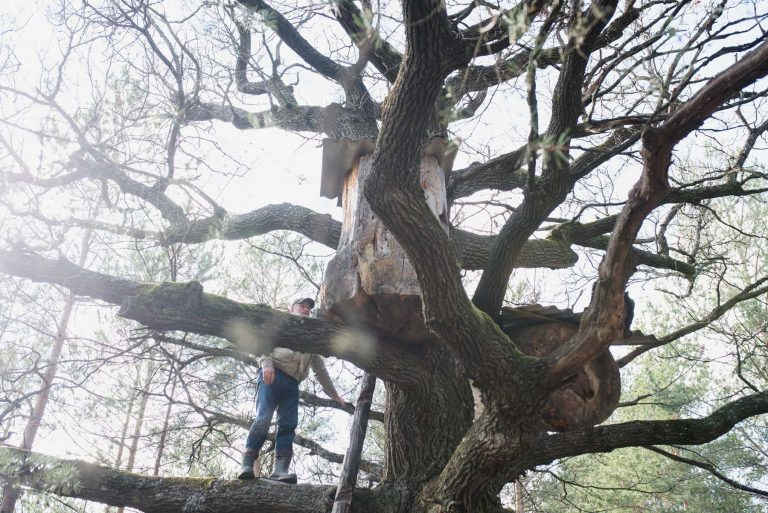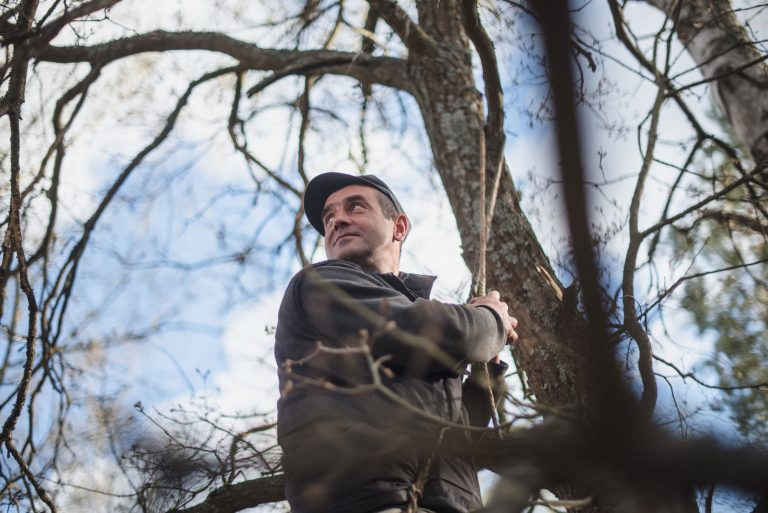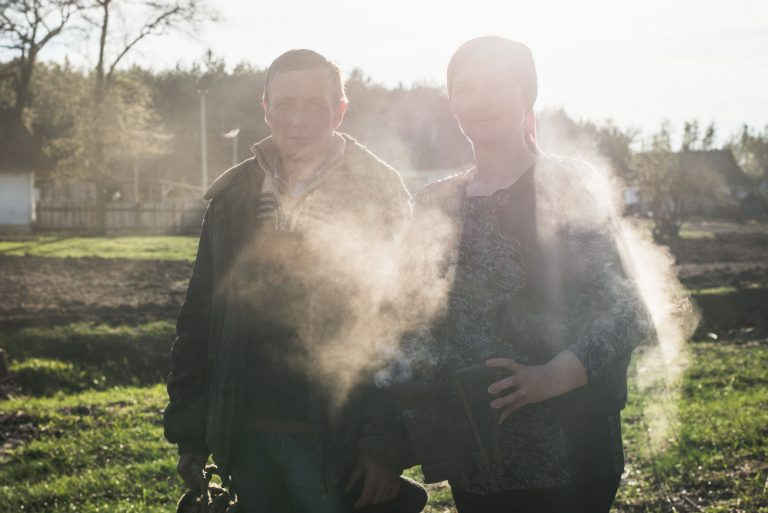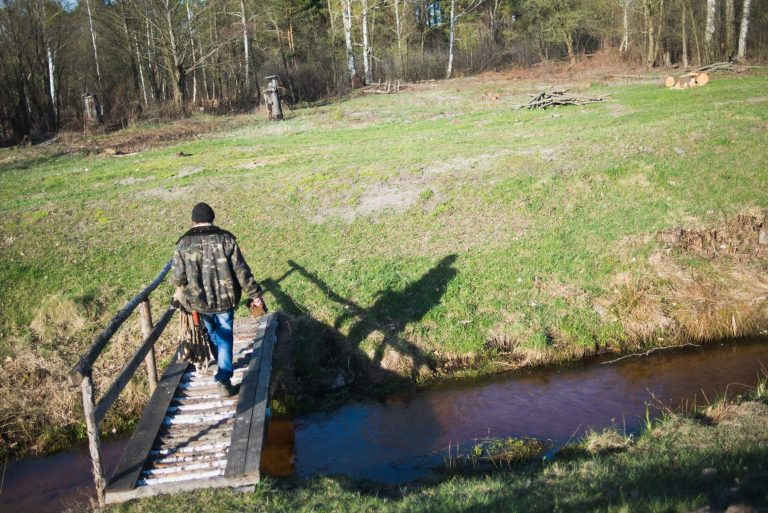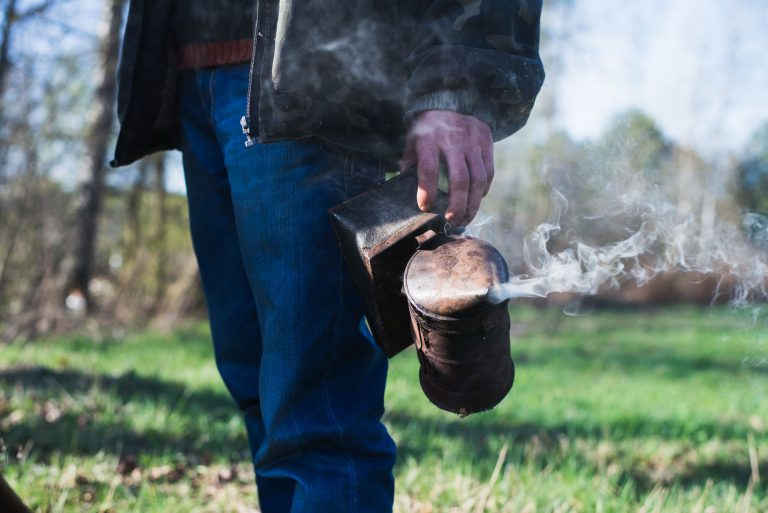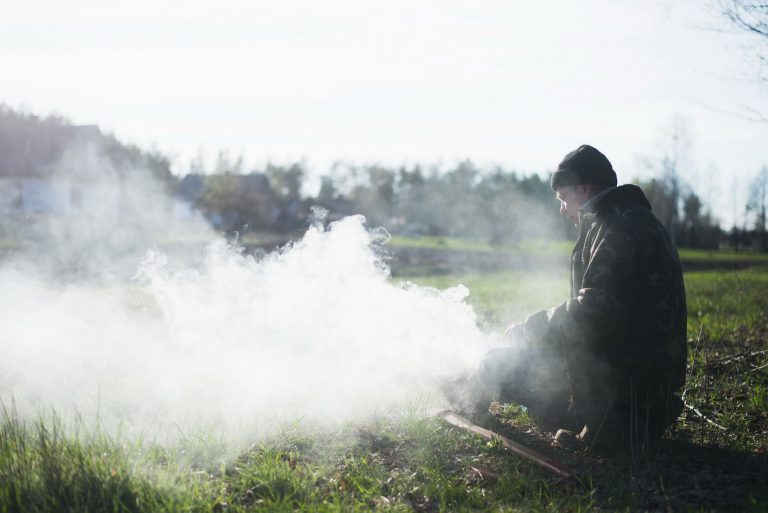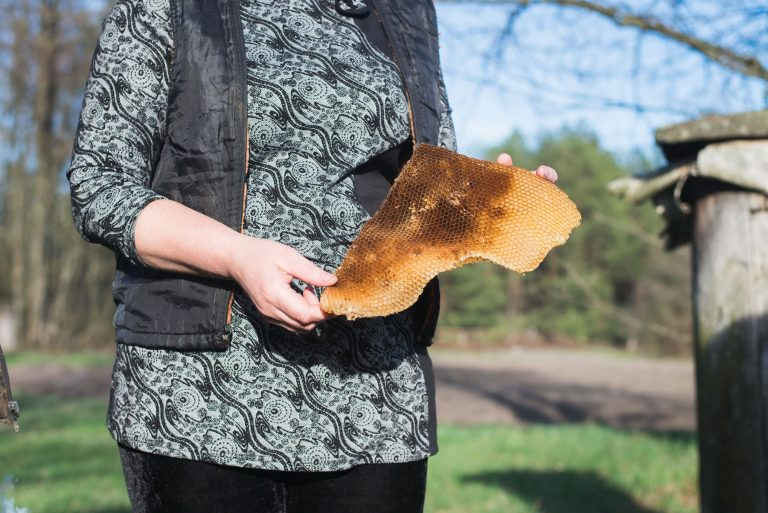Derevlyanshchyna is a region of Polissia, situated west of Kyiv and beyond the Teteriv River. It was a favourite place for Kyiv boyars and princes as it was a very rich area for wild-honey farming, so they often visited the region to collect “hearth taxes”. “Bortnytstvo” (wild-honey farming) was especially developed in regions situated within the Irpin, Sluch and Prypiat Rivers. The forests here are rich in pine trees, where bees like to build their nests. The honey was harvested and stored, and with the advent of spring, foreign merchants who travelled along the nearby trading route, visited these areas to buy up the golden nectar.
Hearth tax
Property tax in feudal Ukraine and Kyivan Rus, which was levied on each hearth and fireplace in a household.Many sources say that “due to the advent of serfdom, these wild-honey farmers gradually ceased exercising their activities in Ukraine”, so it was assumed that this practice had almost disappeared by the beginning of the 18th century. However, this is not true, and this article will tell the story of these incredible wild-honey farmers that still practice their ancient trade in the Polissia region of Ukraine.
Historical Significance
Honey was used as a commercial commodity until the late Middle Ages, so people carefully stored wax and other bee products; they put them in barns and cellars, collected and exchanged them. Koloda was an important local metrological unit used to measure grains and honey.
Koloda
Koloda it was subsequently used across the whole country and remained in circulation in Ukraine from the 14th to the 18th century.In the old days, people simply searched for bee nests when the bee foraging season (“vziatok”), was over, and literally dug out the honey, often destroying the insects and tree hollows. Such uncontrolled honey gathering led to a decline in the number of wild bees, forcing bee hunters to venture deeper into the forests and create new homes for the bees.
Vziatok
Food supply (nectar and pollen) taken from blooming plants.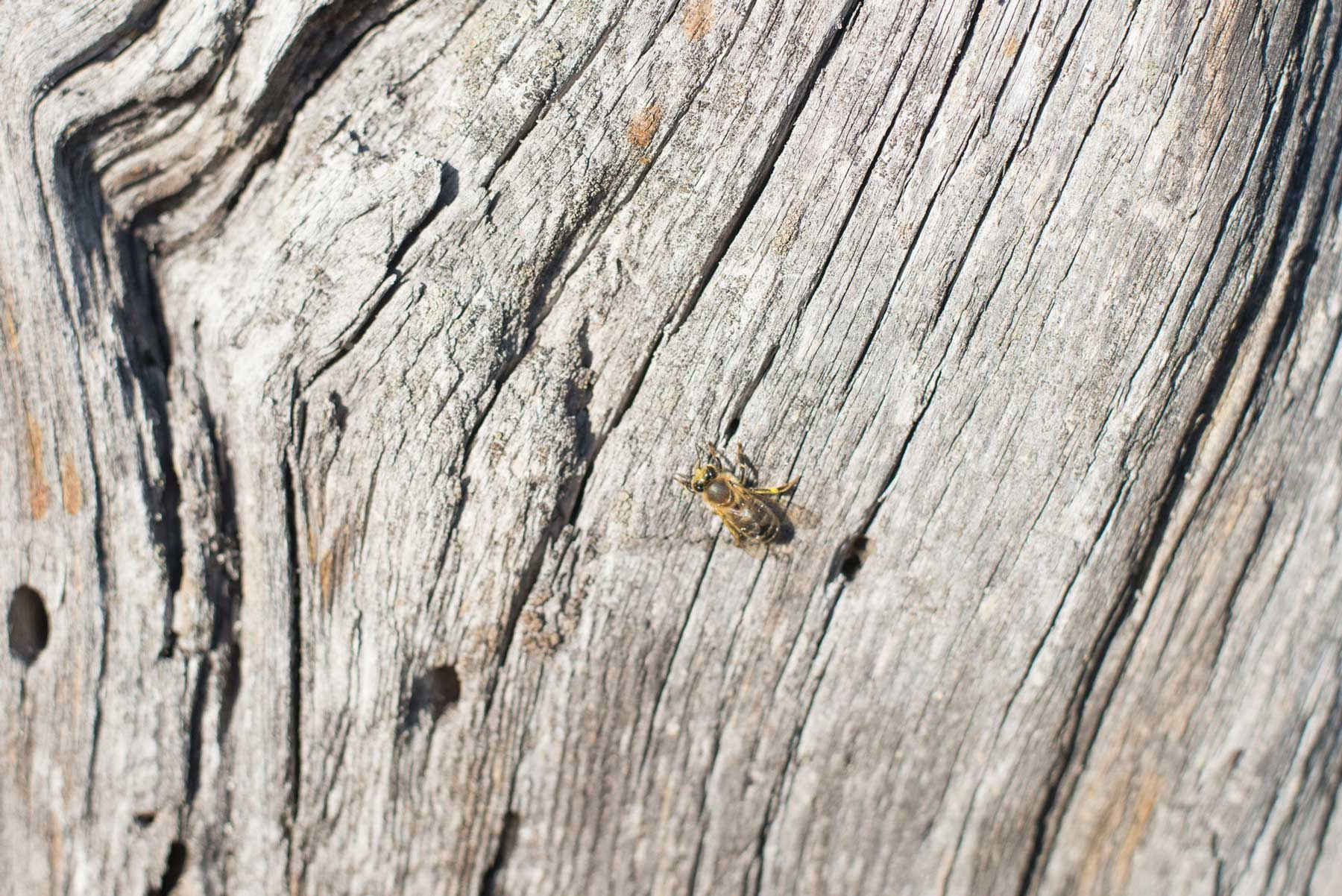
The insects settled mostly in pine hollows; sometimes, the interior had rotted or the tree had been struck by lightning, thus forming a natural hollow – an ideal place for “housing” wild bees. The bees filled the holes with propolis, thus protecting themselves from other insects; the smell of resin contributed to active swarming, and pine resin kept the bee colony warm in winter. The forests benefited greatly from so many bee colonies – the base of tree trunks did not decay or decompose because beeswax and propolis naturally “disinfected” the air and the surrounding environment…
Later, other honey gathering methods were introduced, namely hand-held smokers. However, work conditions were rather chaotic and irrational, so, in the course of time, more practical forms of honey extraction were created. At first, borty were used: the farmer who found a bee nest first made a mark on the tree as a sign of ownership and took care of his bees and their nests.
Bort
A hollow where bees live and work.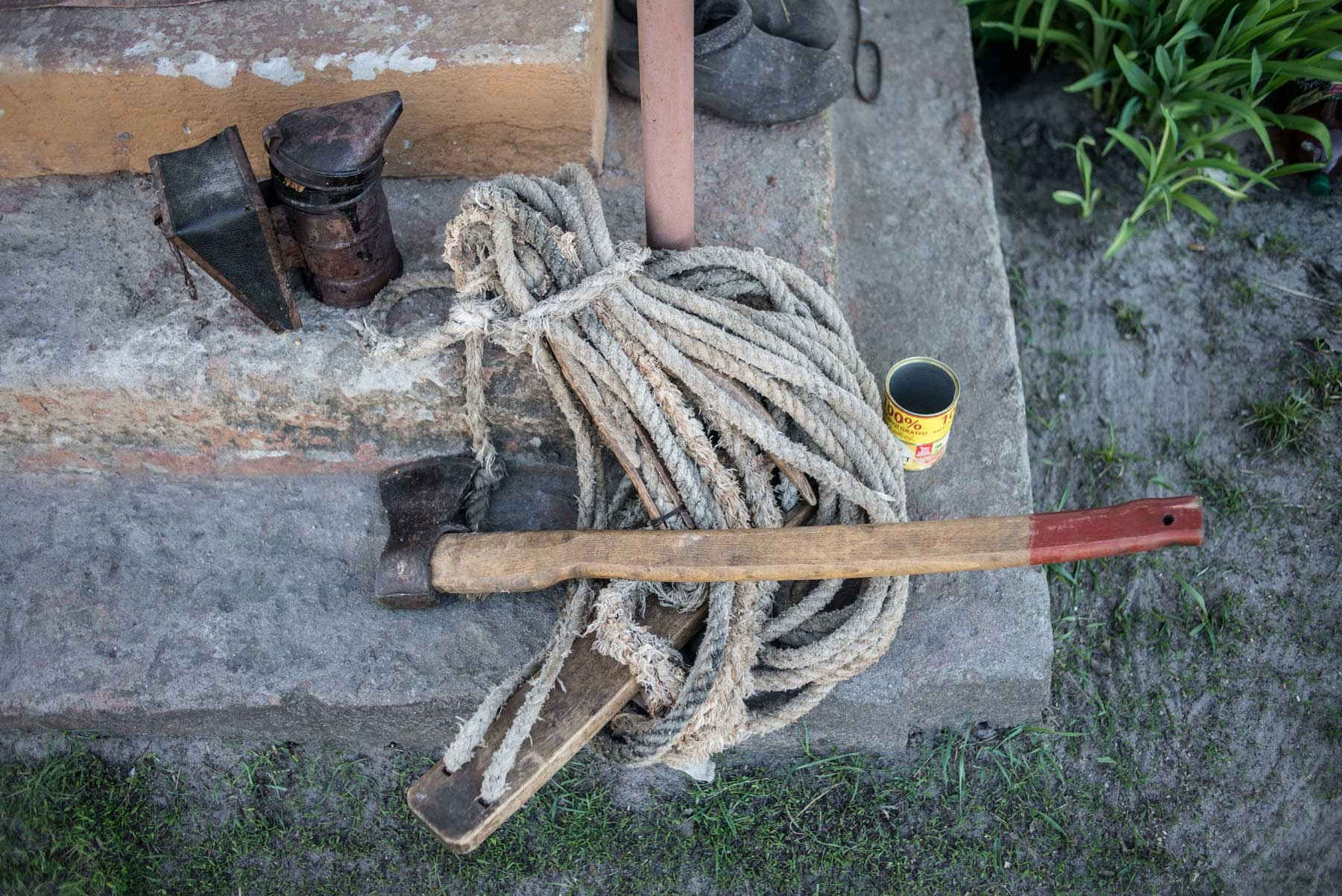
It is important to remember that wax products (especially candles) were used in many traditional ceremonies in Ukraine, so the need for bee products grew. It became more and more urgent to increase the number of nests. The first artificial “borty” (hollows) were thus dug out in old trees and bee colonies were introduced into their new homes.
Another hollowing technique was introduced in the 17th century – “koloda” (log hive). Trees that had fallen during storms were fashioned into hollows and attached to living trees or placed in log fields. Later, bee farmers began making such logs separately and nesting bees in them. The logs were considered the most convenient and best way to extract honey, even after movable frame hives were invented.
Because of the “temperament” of the bees, wild-honey farming required great courage. Moreover, bee farmers had to be physically fit in order to carry the hollows through the forests, hoist them onto branches and climb the trees. As honey products were highly valued, it is not surprising that wild-honey farmers were particularly admired and respected.
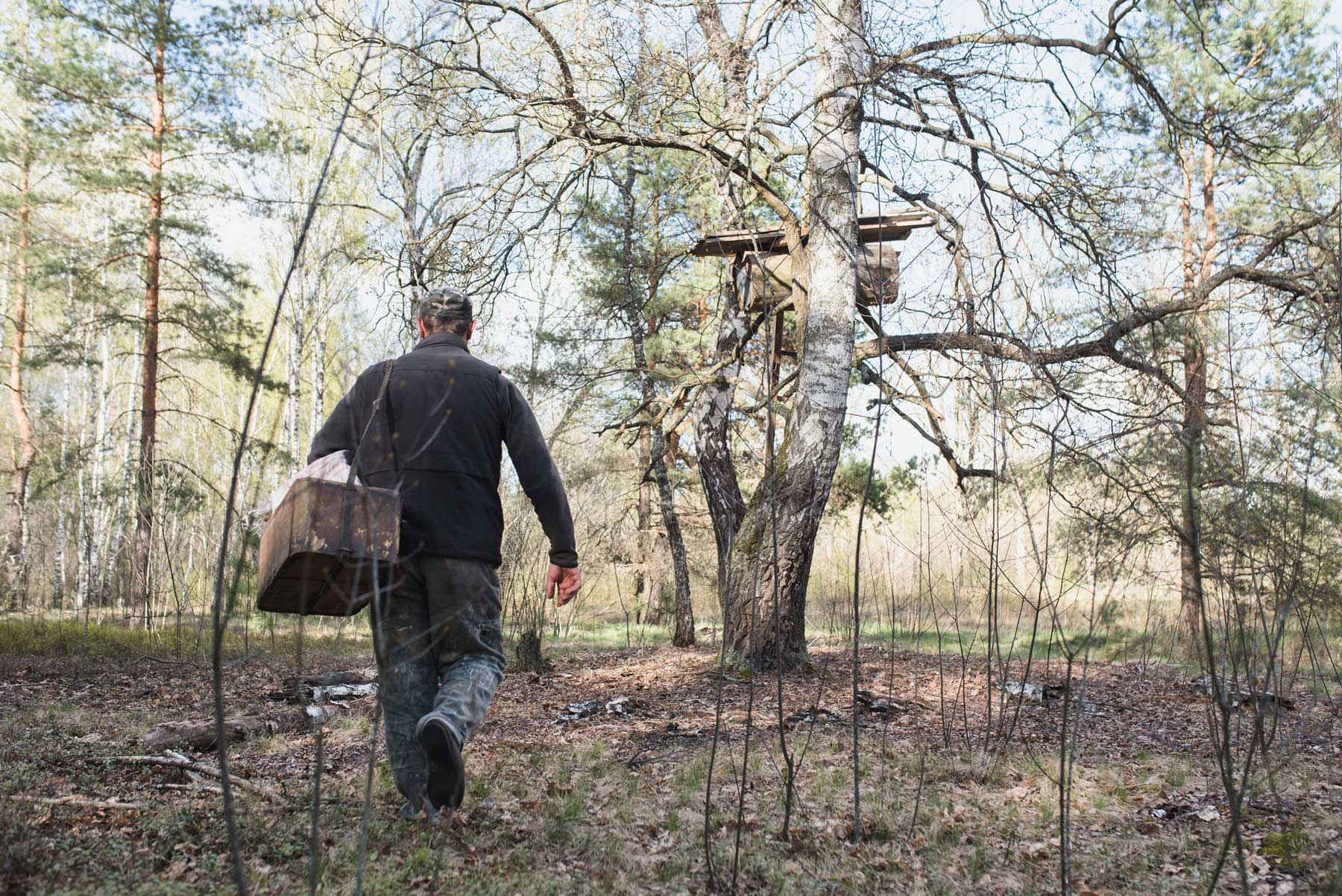
A Traditional Occupation in Modern Times
Despite the fact that many sources claim that wild-honey farming has disappeared, today it is possible to meet people in Polissia who have rethought and reworked this concept in a modern way without losing the original traditional approach.
Serhiy Zhyla is a bee farmer from Selezivka. Despite all the developments and changes in the bee industry, Serhiy still uses his great-grandfather’s axe to hollow out the trees:
— A hollow is like a living organism: it has a “heel”, a “head”, a “fringe”, and a “body”. Log hollows can survive indefinitely. But, it’s most important to care for them not to let them get too wet.
slideshow
Serhiy believes that pine trees covered with fungus are the best option for wild-honey farming. The wood acts like a “sieve” – it is porous inside so the heat remains on one side, whereas other types of wood allow moisture to escape:
— Hollows that have a sheared surface allow moisture to escape, which makes it very uncomfortable for the bees. There’s no transpiration, so the bees spend less time fanning their wings in order to evaporate moisture or water from the nectar, to make honey.
Today, wild-honey farmers mostly use log hollows. Covered with a small roof, they protect the kolodas from moisture and rain. Such logs can often be found attached to trees in Polissia forests. The farmers choose a tree with many branches, to which they attach their beehive. To reach the highest branches, they use a ladder, which looks more like a long thick climbing pole with foot pegs attached to the sides. In this way, the bee farmer climbs up the tree to reach his hollow.
There are two main types of log hollows: “stoyak” (standing log) and “lezhak” (reclining log). Pavlo Zinkevych says that standing logs are better because wild bees instinctively see the hollow, fly into it and make it their home. Wild-honey farmers believe that it is important for bees to remain in their hollows for many years and store the honey in the “head” of the hollow. These nests have a lot of honey at the top, from where it is collected in the autumn. Reclining logs are placed at an angle, so the bees can also deposit the nectar at the top, thus making it possible for farmers to collect up to five kilos of honey, depending on the colony.
The sides of hollows are not even. Serhiy Zhyla explains that one side should be higher because this shape helps create more heat in the nest. In fact, the bee colony will spend the winter inside, huddle in one area, thus generating more heat.
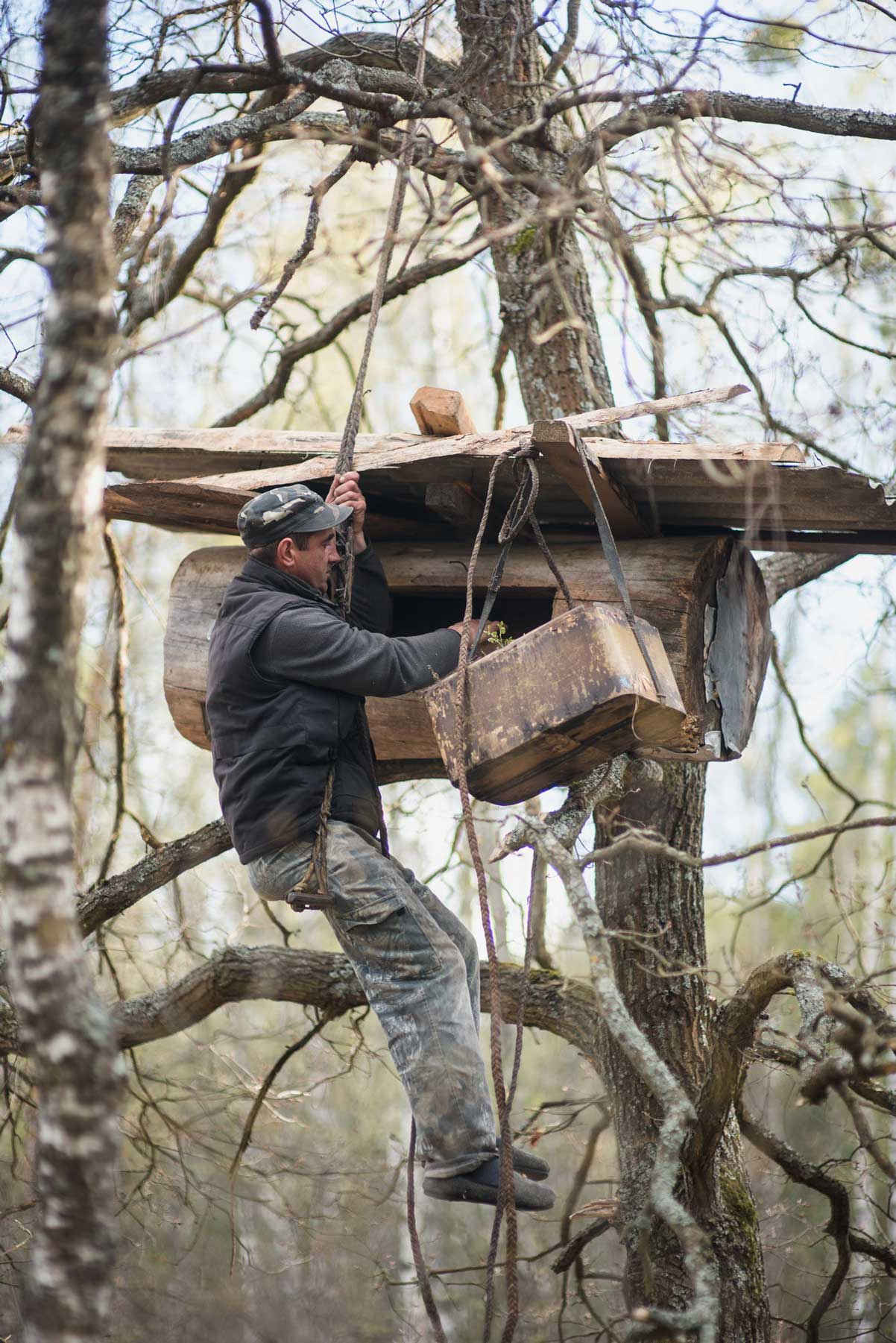
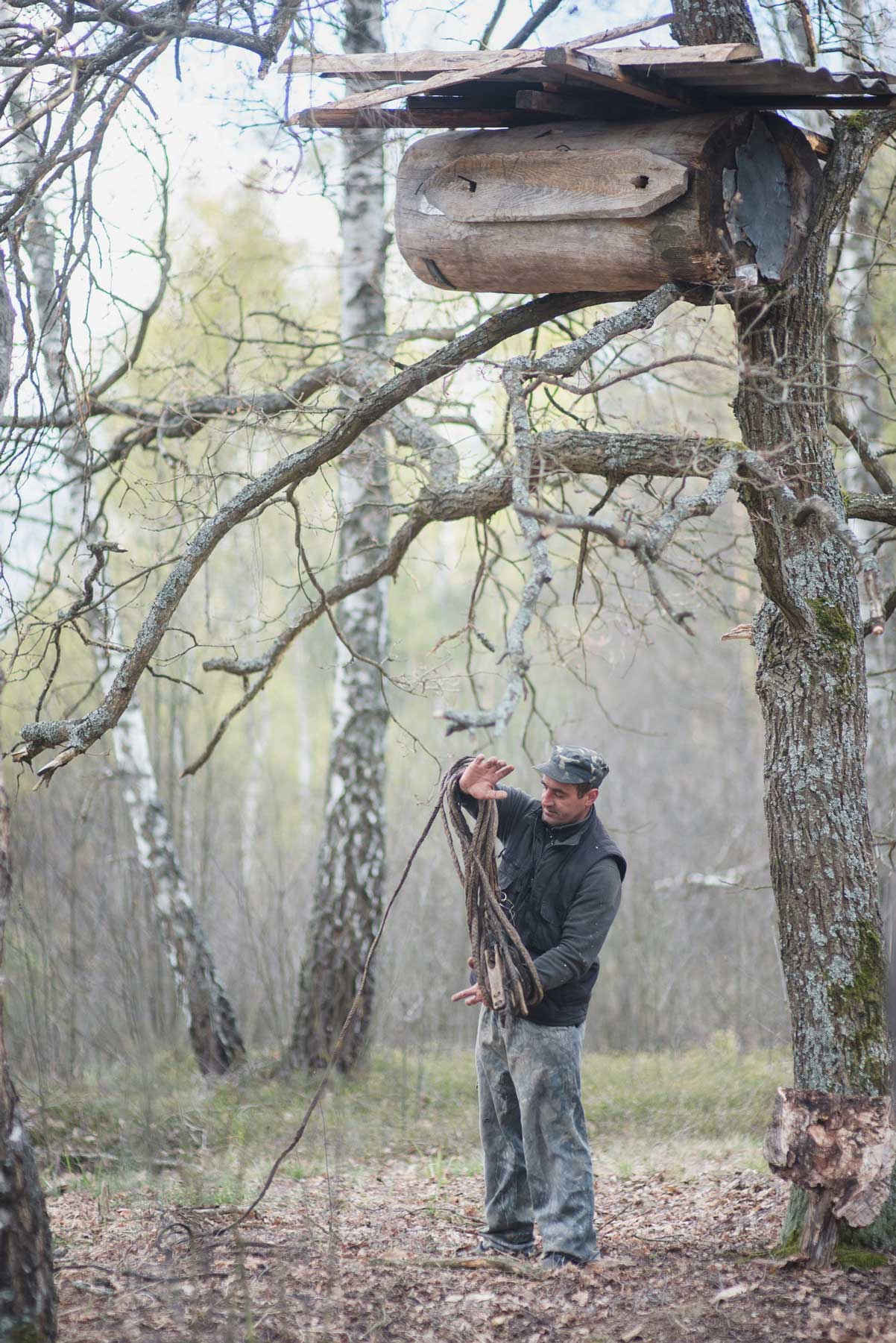
You can often see wells near old log nests. The bee farmers dug them out themselves so that they could wash away the sticky sweet substance right after climbing down from the trees.
Removing excessive wax and cleaning the nests from dead bees in spring, covering up holes made by woodpeckers in winter, caring for the colony in summer, and gathering the honey in autumn – this does not seem like too much work for wild-honey farmers. But, they all agree that things really get rolling in the spring:
— As soon as the snow starts melting in March, we clean the hollows of wax moth larvae. The queen bee leaves the hive as soon as the weather warms up, so she shouldn’t be disturbed after that. Before winter sets in, we must also help the bees to warm their nests.
That’s why wild-honey farmers, unlike standard commercial beekeepers, have little time to rest:
— We start in autumn, cleaning the hives and getting them ready… and, believe me, that’s a lot of work!
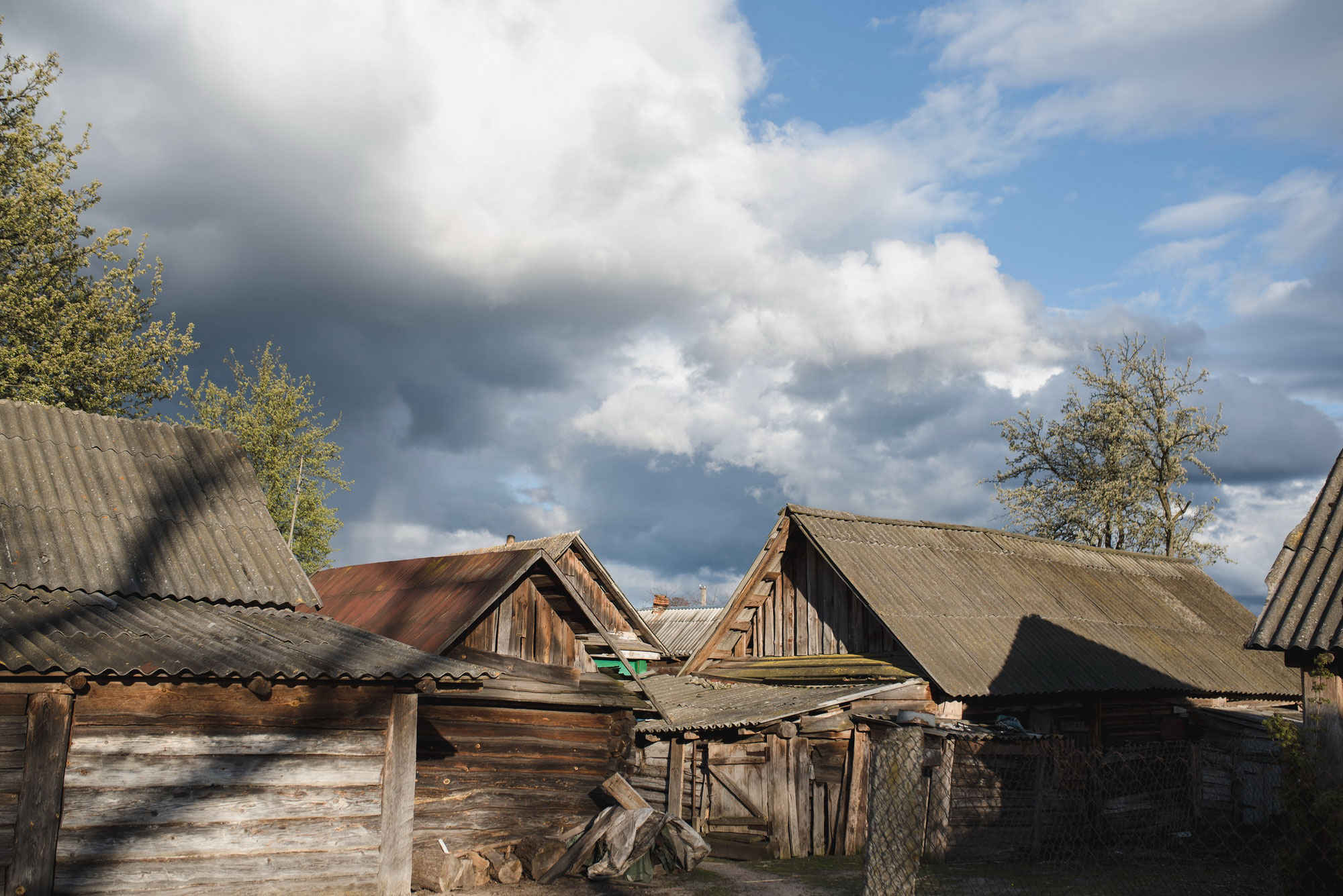
Selezivka – a Village of Wild-Honey Farmers
You may think that only the older generation is engaged in wild-honey farming, but we met young people who have also become interested in this tradition. For example, Volodymyr Androshchovych from Selezivka has not yet reached thirty, but he already works actively with wild bees and rides to the nests on his motorcycle.
Villagers do not like showing their bee nests to strangers. They say that if you show someone a colony, the bees will disappear. Pavlo Zinkevych once allowed reporters to film the honey gathering procedure. Today, he is convinced that photo and video technology have a negative effect on the bees, so he showed us only empty log hollows in the forest.
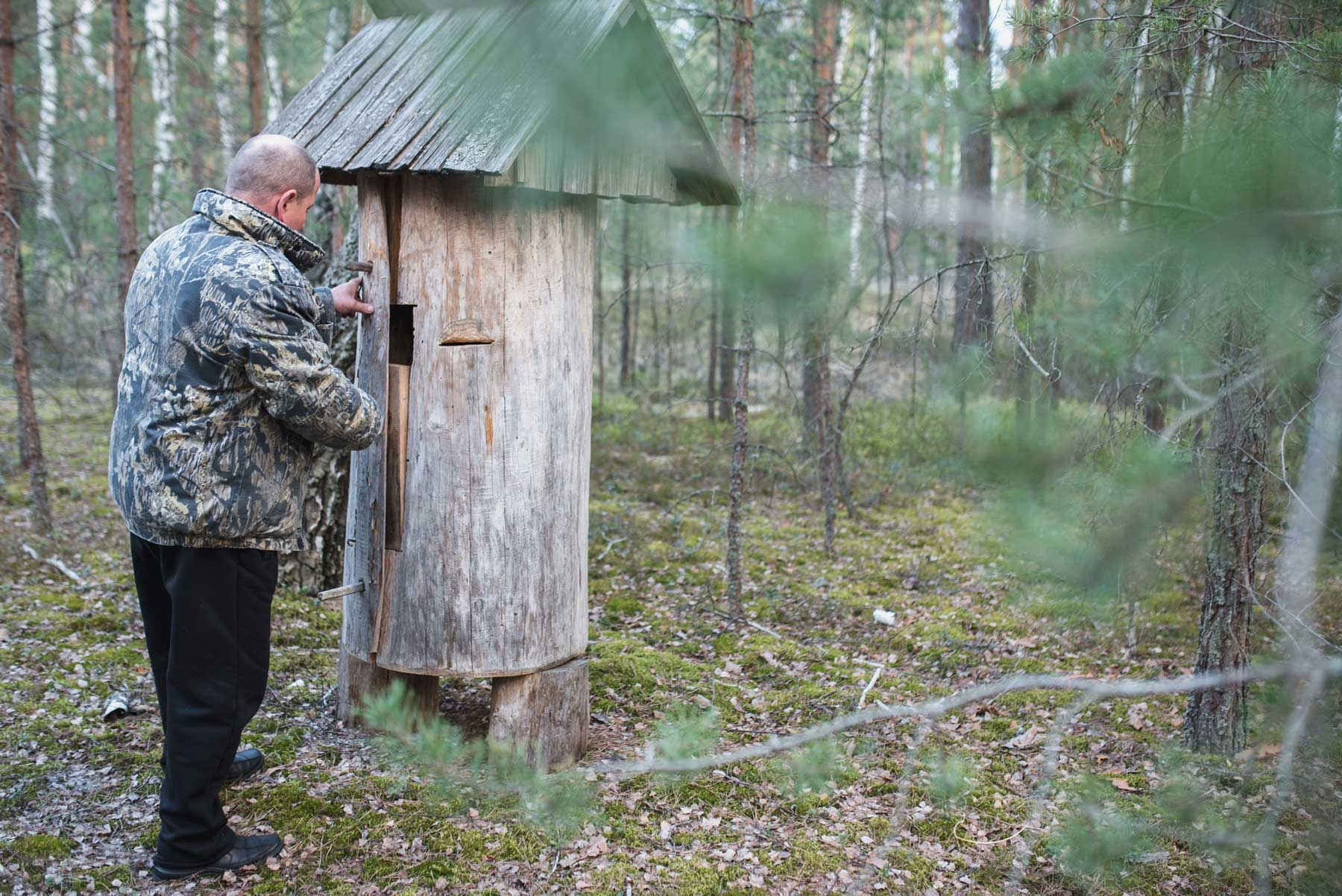
Pavlo says that the size of bees in the colony is determined by the environment. As bees get into the hollows through tiny holes in the tree trunk, which they continue using to fly in and out of the nest, they do not grow because otherwise they would not be unable to fit through the tiny holes in the log.
Today, wild bees make their homes in the logs, and although they are still said to be quite aggressive, Pavlo Zinkevych believes that it depends on the colony… although it is hard to stop them during swarming. These insects do not recognize any form of ownership, so they have no trouble leaving their logs and hives. When it comes to calming them, the farmers have learnt to “smoke” the bees and have even invented portable hand smokers to make the job easier.
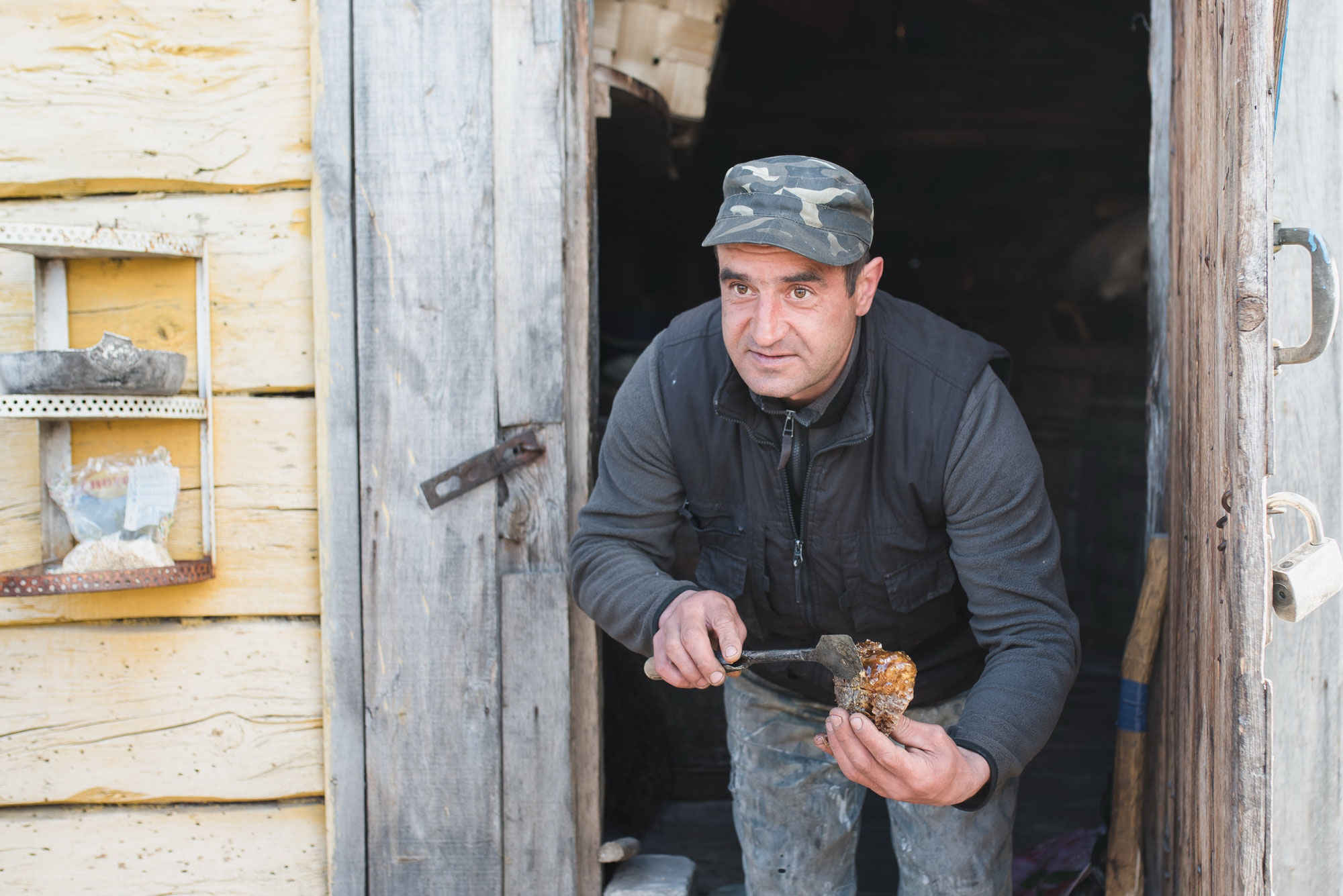
Two Types of Bees
In Selezivka, the Director of the Polissia Nature Reserve, Serhiy Zhyla, tells us that there are two types of wild bees. The first are “grey and hairy” or, as the inhabitants of Polissia call them, “small and blind”. They make their homes far from rivers, have a small proboscis (hairy tongue) that allows them to collect pollen from tiny flowers. In floodplains, where, among other things, there are more flower heads, you can often see another species – large yellow bees with a long proboscis.
These highly organized insects settle in log hollows and coat them with wax. They have their own queen bee, drones and worker bees; wild bees produce the same things as standard bees, namely propolis, wax and honey… only the quality is different – everything is more natural, and no chemicals are used.

This is perhaps the only place where you can taste real forest-gathered honey. Traditionally collected in autumn, this succulent nectar combines many wild flavours. Bees collect the pollen and nectar when the first flowers start blooming in early spring: from wild wheat, blueberries, lingonberries and cranberries to late autumn flowers – the bees feed on everything that blooms in the forests and fields. Honey, harvested by the wild-honey farmers, is reputed for its healthy, natural and delicate taste, and is, therefore, much more expensive. The farmers are convinced that bees, which live in movable frame hives, do not produce such fantastic nutritious honey.
It is clear that not only humans value and hunt for these natural sweets. The farmers tell us that the log hollows are often devastated by different pests, from ticks, woodpeckers and martens to bears. There is more and more demand for wild bee products, and chunks of honeycomb are often sold in local markets. In Polissia, honey is served in this form, and locals often eat it together with the wax.
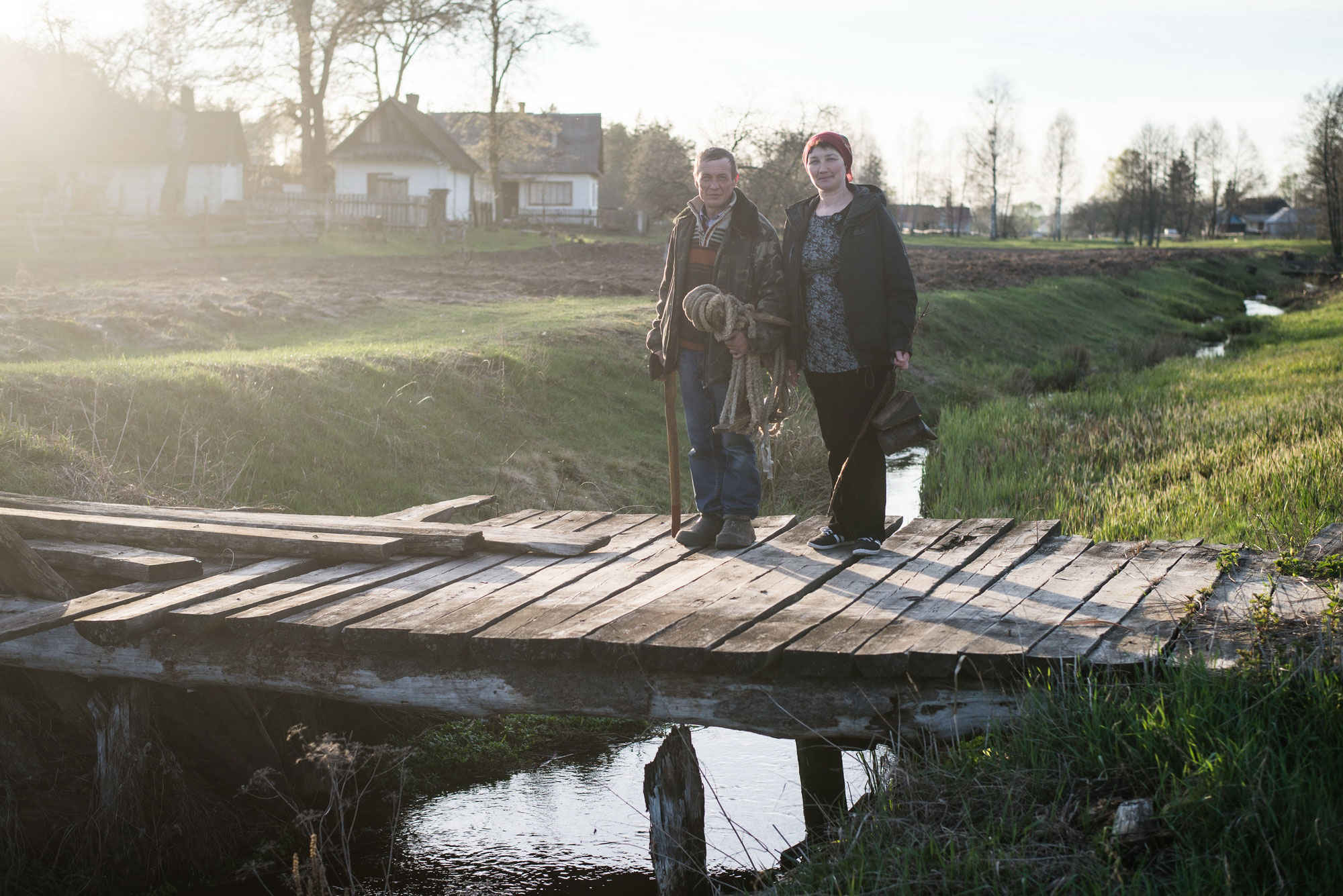
The Last Dynasty of Wild-honey Farmers from Knyazivka
In addition to Selezivka, where Serhiy Zhyla, Volodymyr Andronovych and Pavlo Zinkevych work and live, there are whole families in Polissia that continue this ancient tradition. Yuriy Starynsky from Knyazhivka in Rivne Oblast took over wild-honey farming from his father-in-law.
— It calms your nerves… Anything can happen in life; there’s a lot of stress everywhere. So, I just go to my bees, rest a while near the hive, look after them, and forget everything.
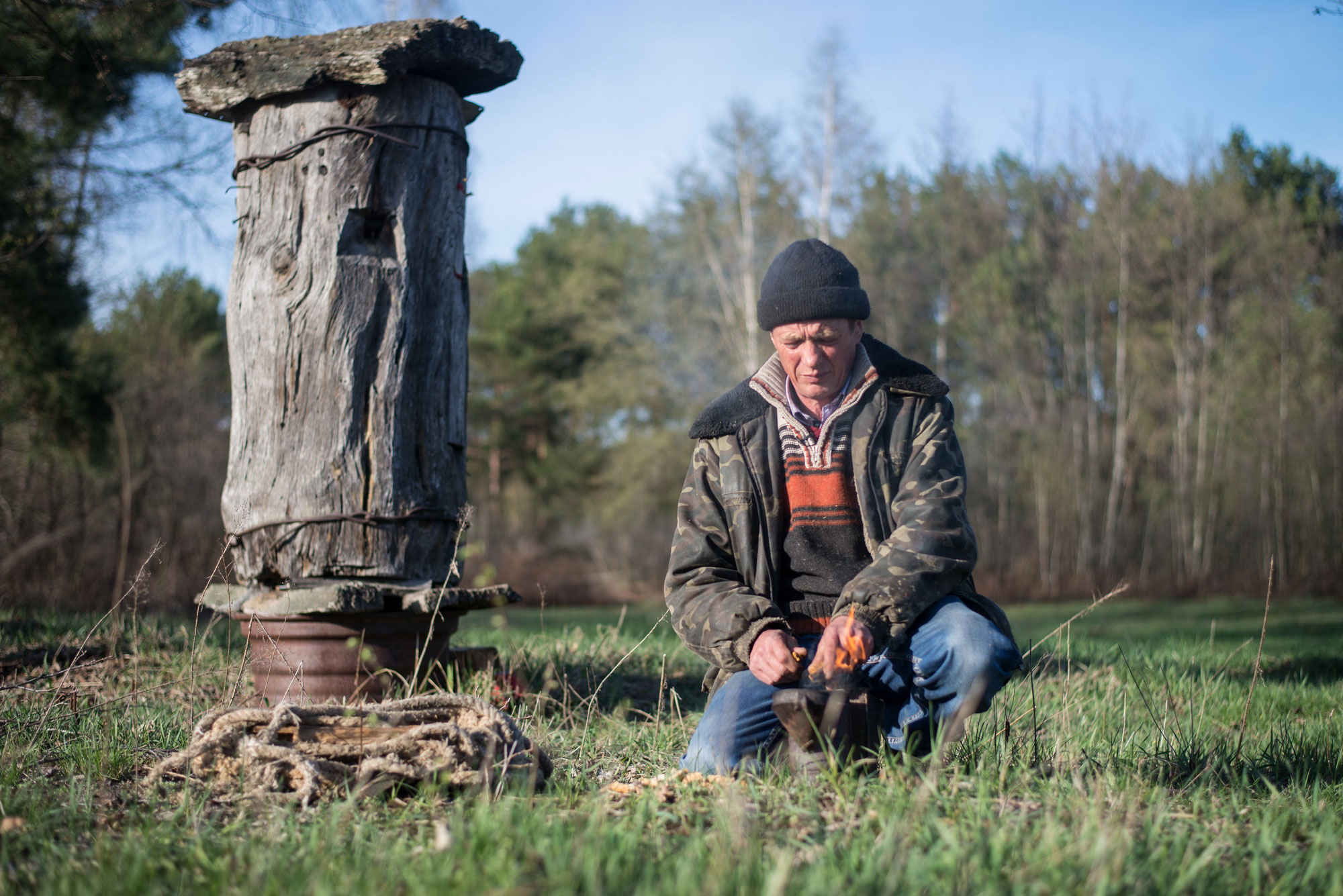
Yuriy speaks enthusiastically about his work and how he is assisted by his wife, Tetiana:
— We’ll see them at the beginning of May – a young swarm getting ready, buzzing around actively and choosing the queen bee. This is what they do – the young bees leave the nest, and perch on a nearby branch. They sit there for about 15 minutes. I get my special box, shake them into it and cover everything with a bag. I then put them in another box. I catch the queen bee, put her in a queen cell, and shake the bees out of the box so that they gather around her.
slideshow
Tetiana often helps Yuriy with the logs in the forest while he is working on a tree:
— I can do the housework by myself, but here, an extra hand is required.
Tetiana and Yuriy have about 40 nests, but they say that the climate has changed a lot, so the bees often fly out too early, and then die with the onset of the first frost.
They regret that there are no more real wild bees. They have all become domesticated because there are so few trees left. Many trees were felled and their trunks were hollowed out for bee colonies… So now, bees are obliged to build their nests in log hollows made by humans.

